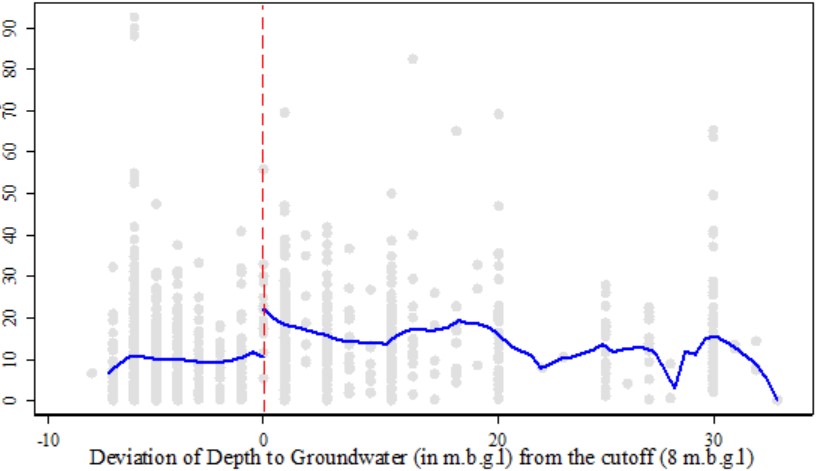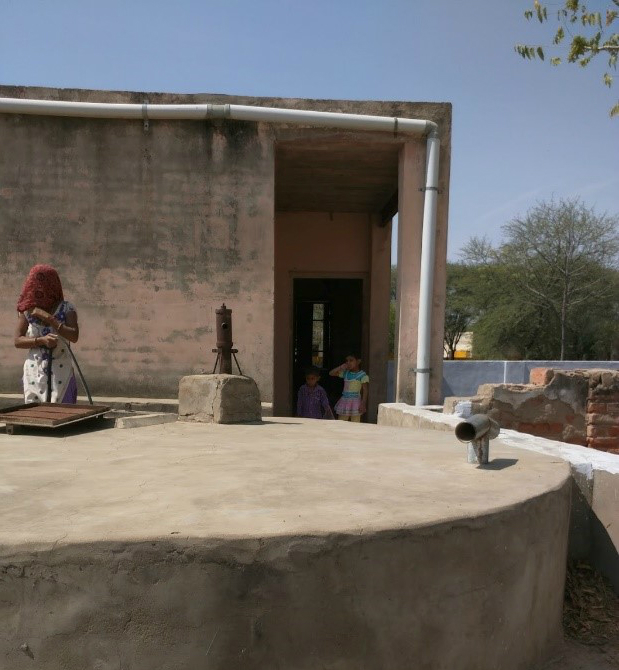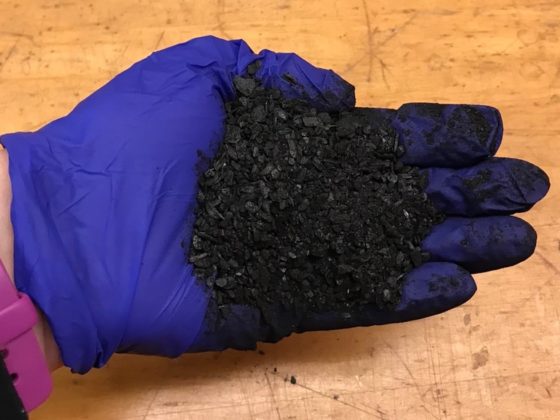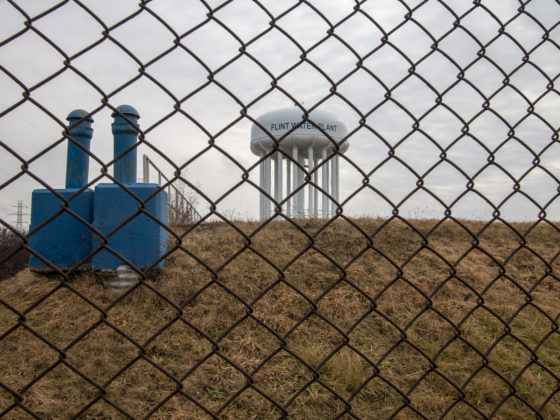Groundwater is a vital resource around the world. Groundwater irrigation has ensured food security in many parts of the world, and some estimates suggest groundwater irrigation sustains as much as half of world food production. Hence, promoting sustainable use of groundwater should be at the center of water policy discussions.
In India, where I conduct much of my research, groundwater irrigation has increased agricultural yield markedly. Around 53 million Indians are employed in agriculture and their livelihood is heavily reliant on groundwater irrigation. In addition, around 80 percent of the rural population in India uses groundwater to meet their drinking water needs.
However, recent trends show significant depletion of the aquifers. The Indian government has ascertained that more groundwater is being extracted than is being replenished in at least 15 percent of the administrative blocks in the country. Many regions of India have experienced more than a 12 meter decline in water-tables since 1980, and satellite-based assessment by NASA shows rapidly falling water-tables in the agricultural states of Punjab, Haryana, and Gujarat.
These rapidly falling water-tables can adversely affect the well-being of rural households. A key question is ‘how much?’ In a research study published in American Economic Journal: Applied Economics in 2014, I examine the consequences of groundwater irrigation access for rural well-being [i]. The goal is to inform policy interventions that may encourage sustainable use of groundwater aquifers.
In order to empirically analyze my questions, I analyze three main sources of data. The groundwater data at the village-level are from two waves (1993 and 2000) of the Minor Irrigation Census conducted by the Ministry of Water Resources, Government of India. I use irrigation and groundwater data for 5 districts in the state of Uttar Pradesh. Poverty data comes from a poverty census conducted by the government of Uttar Pradesh in 2002. A large variety of control variables are collated from Population Census of India 2001 and the Village Directory of the Census of India 2001. I also collated geographical variables from various sources.
In order to assess the impact of groundwater irrigation access on rural populations’ well-being, I explore relationships between groundwater depth and outcomes like poverty and conflict. It turns out that relatively inexpensive pumps can be used to extract groundwater from water tables that are within 8 meters of the surface. However, different pumps are required to extract groundwater from water tables that are more than 8 meters from the surface. These pumps are very expensive. So, I explore the causal effect of groundwater access by comparing poverty and conflict outcomes for villages with water tables just below and just above the 8 meter threshold.
As shown in the figure below, the data demonstrate that poverty is much higher just above the 8 meter threshold than just below the threshold. Villages with expensive irrigation extraction opportunities experience poverty rates that are 10-12 percent higher than otherwise similar villages with inexpensive extraction opportunities, all else equal. Similarly, villages with expensive groundwater extraction opportunities report 27 percent more conflict over water than otherwise similar villages with inexpensive groundwater extraction opportunities, all else equal.
My results show that ready and inexpensive access to irrigation groundwater substantially reduces rural poverty and conflict in India. These findings have crucial policy implications and call for thinking about conservation strategies for preventing water-tables from depleting. One clear implication is that shutting off access to groundwater in response to rapid depletion will have perverse effects on well-being. Groundwater has important implications for poverty and disputes over water. On the other hand, compared to other pathways for poverty reduction, providing unchecked free access to groundwater might deliver immediate benefits but could result in long- term costs as aquifers decline. Depleted groundwater reserves will result in much greater poverty and potentially much greater conflict.
[i] Sekhri, Sheetal. Wells, Water, and Welfare: Impact of Access to Groundwater on Rural Poverty and Conflict. American Economic Journal: Applied Economics, July 2014, Vol. 6(3): pp. 76-102.
Figure: Poverty vs. Depth of Groundwater in Indian Villages

The graph reveals a discontinuity: A measure of average village poverty (blue line) increases when groundwater is deeper than the threshold depth for groundwater of 8 meters below ground level (red line). Each dot represents a village in terms of its poverty (the Y axis measures percent of village population that lives below the poverty line) and the depth of its ground water (on the X-axis). To the left of 0, groundwater is available at a depth of less than 8 meter below ground, to the right at more than 8 meter.





